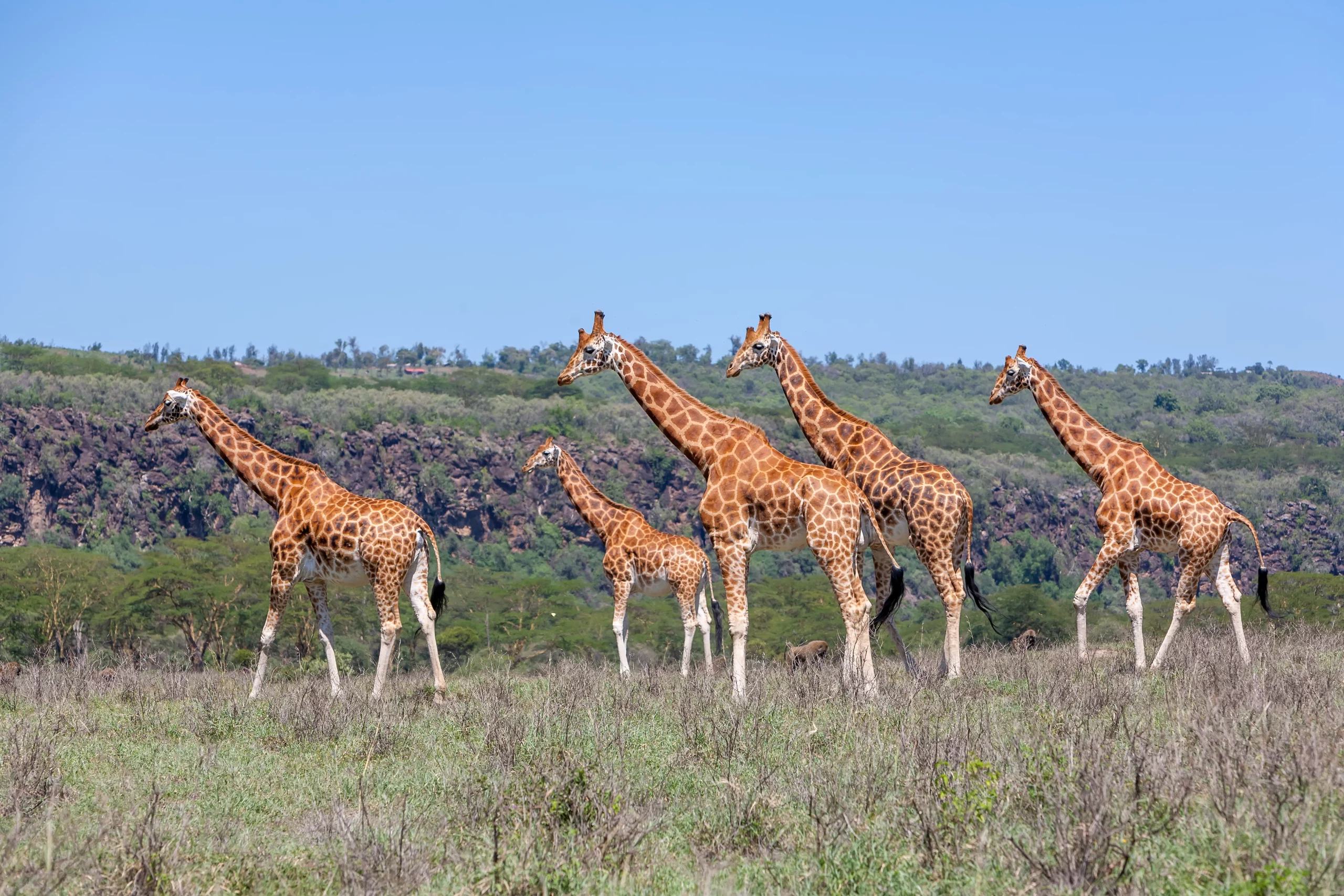
The Masai Giraffes
The Masai Giraffes, often called the Kilimanjaro Giraffes, are the tallest land mammals on Earth. They are truly a sight to behold, with their graceful strides even when they reach speeds of 50 to 60 km per hour. You can tell Masai giraffes apart from Reticulated giraffes by their jagged, irregular spots, unlike the polygonal liver-colored spots of the Reticulated giraffes. In Kenya, these majestic animals can be spotted on a wildlife safari in the Masai Mara Game Reserve or by visiting various national parks and reserves. It’s estimated that there are about 33,000 Masai giraffes living in the wild in Kenya.
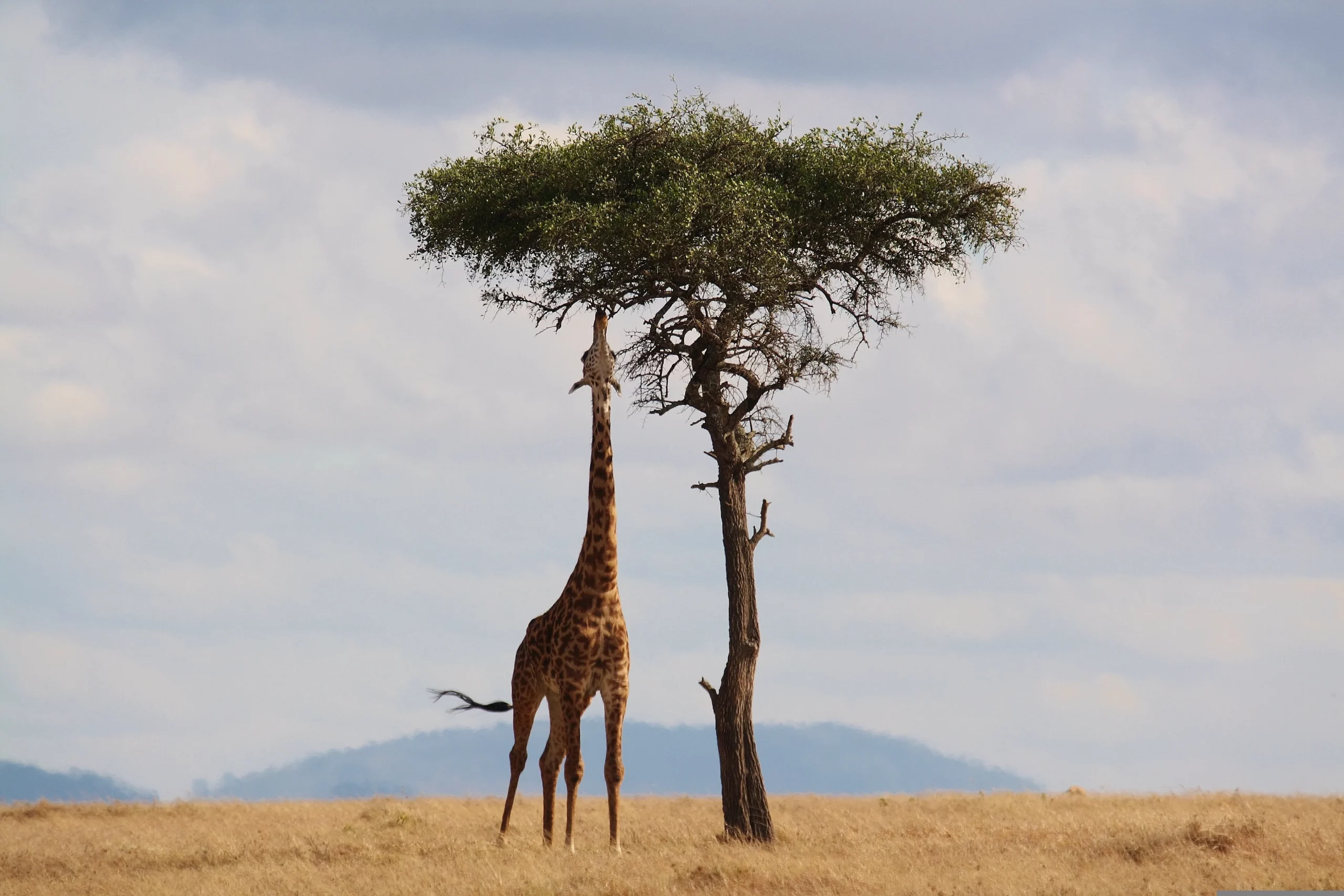
Masai giraffes are fascinating creatures that are active during the day and often found in small social groups. They spend a significant part of their day, about 16 to 20 hours, munching on the leaves of various Acacia trees. Using their long lips and prehensile tongues, they skillfully navigate around thorns to reach the tasty leaves. With a four-chambered stomach, they can chew their cud much like cows do. When there’s plenty of fresh vegetation, they can go for weeks without needing a drink, as they get most of their water from their food. Male Masai giraffes usually reach for the top branches, while the females prefer the lower ones. Their main threats are lions, hyenas, and poachers. However, they have a couple of impressive defenses: their speed and a powerful kick that can knock out or even seriously harm a lion.
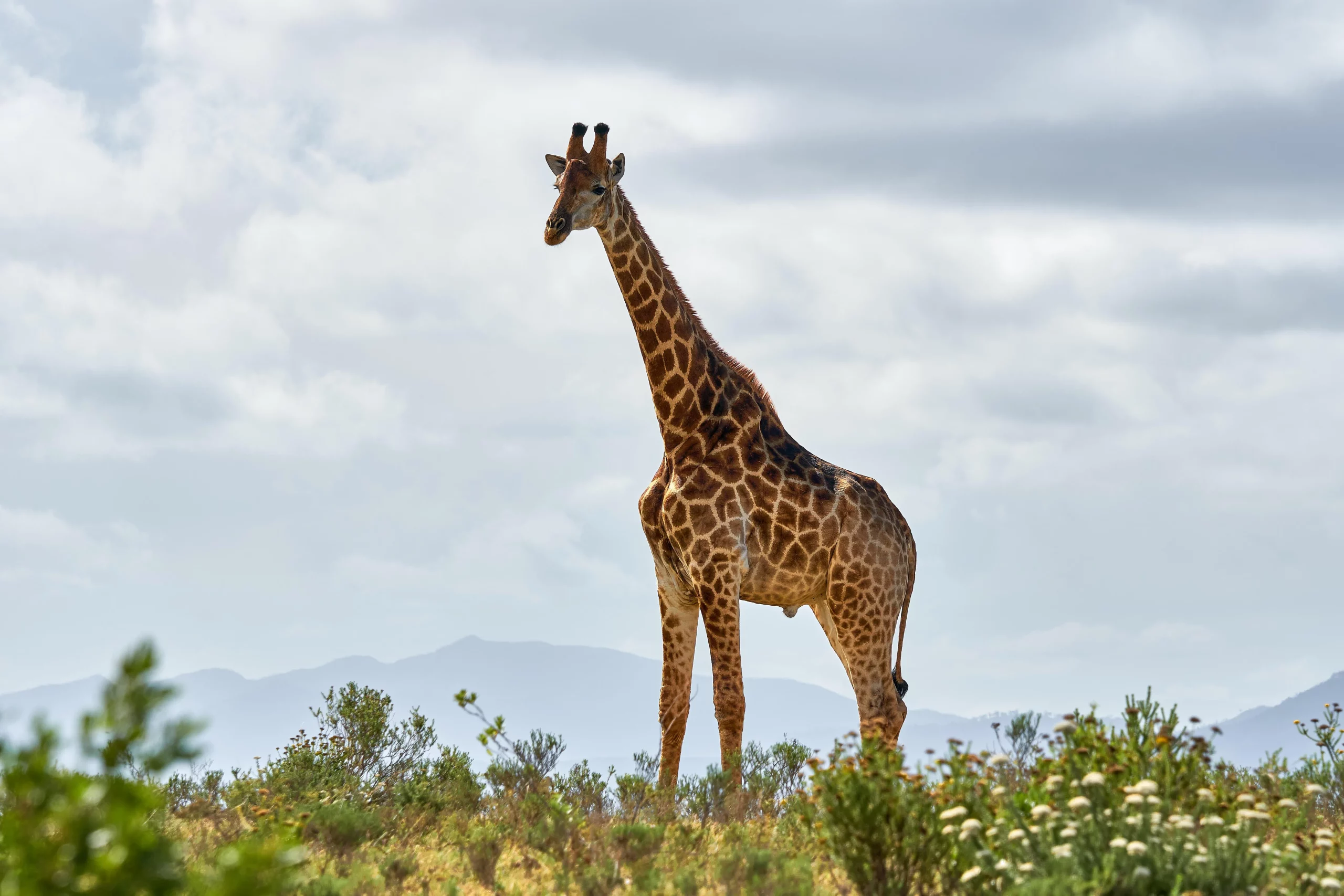
Masai giraffes don’t have a specific breeding season, which means they can have babies at any time of the year. A Masai giraffe can start having calves when it’s about 4 years old. Sadly, many calves, around 50% to 75%, don’t survive their first few months due to predators. When a calf is born after a long 14 to 15-month pregnancy, it’s already 6 feet tall and grows quickly. In its first month, the calf stays close to its mother for protection. After that, it joins a group of other calves, where a ‘babysitter’ cow looks after them. The calf remains in this nursery for about a year. Masai giraffes can live for 25 to 30 years.
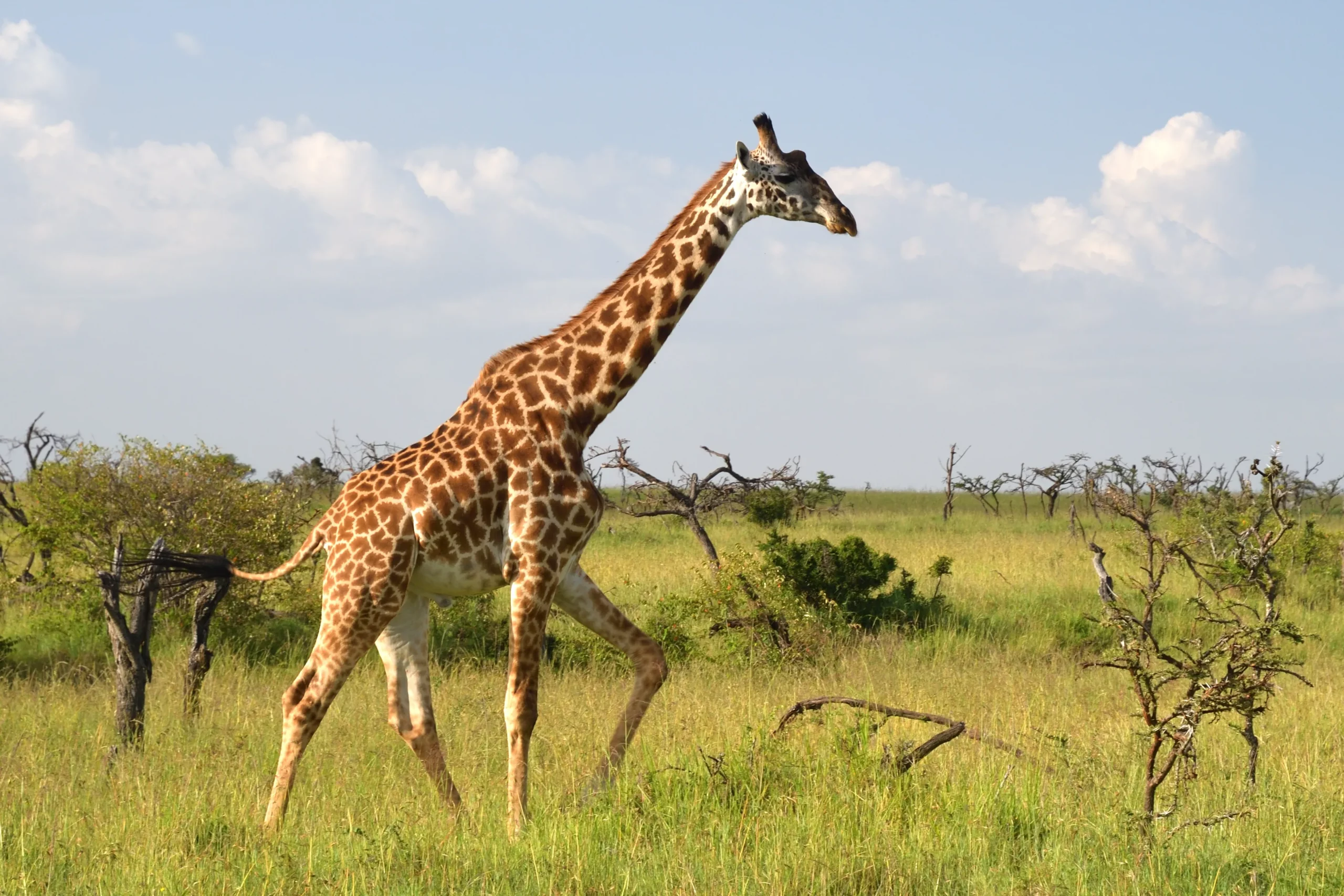
Masai giraffes are currently listed as endangered by the IUCN. Over the past few decades, the Masai giraffe population has decreased by 52% due to poaching and the loss of their natural habitat.
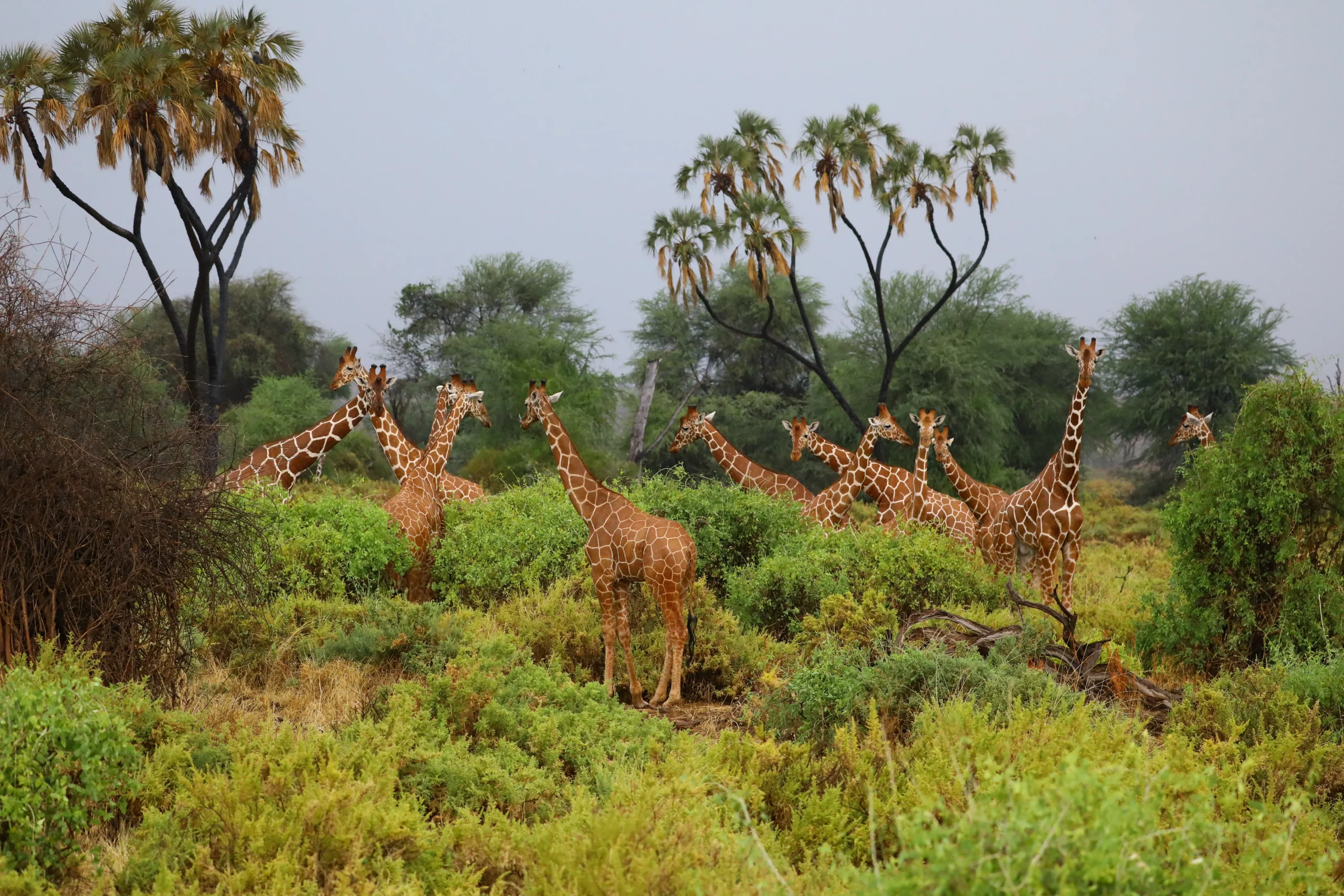
Female Masai giraffes sport thick hair on their heads, while the male Masai giraffes are bald on top. Both male and female Masai giraffes have unique skin-covered horns called ossicones. Their coats are adorned with irregular star-shaped patches and are buff-colored below the knee. Just like human fingerprints, no two giraffes have the same spot patterns, making it easy to identify each individual. Male Masai giraffes can grow up to 19 feet (5.5 meters) tall and weigh between 2,475 and 4,275 pounds (1,100 to 1,900 kilograms), while females reach up to 16 feet (4.8 meters) and weigh between 1,575 and 2,700 pounds (700 to 1,200 kilograms). Their tongues are an impressive 18 inches long, and they have long, prehensile lips. Masai giraffes can run at speeds of up to 35 miles per hour.
